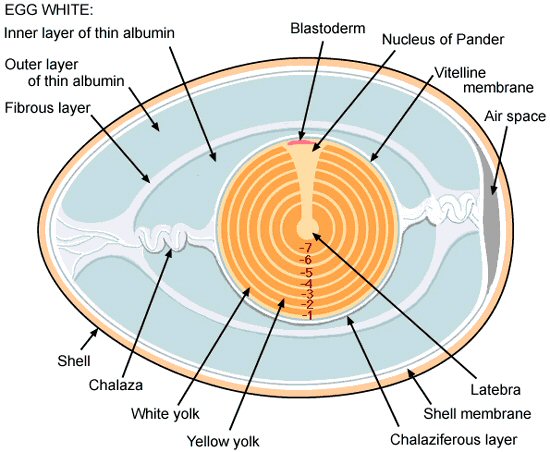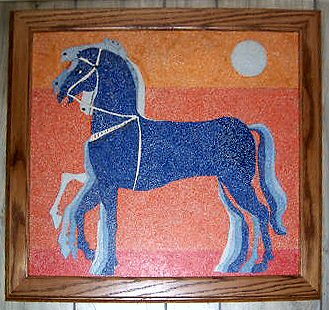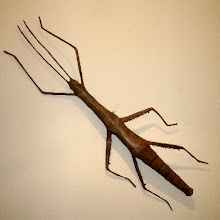You will need a lot of shells. Get your friends to save them for you. Tell them to just give them a rinse, and that it doesn’t matter if they are in little pieces - they’re going to wind up that way anyway.
Keep in mind that eggshells may have a few Salmonella bacterium hitching a ride. Washing (and the upcoming vinegar bath) should take care of any that are lingering, but it is wise to take precautions – keep hands and workspace clean between working with unwashed eggshells.
Eggs are complicated things. The shell itself is mostly calcium carbonate, held in a matrix of proteins. Attached to the shell is the shell membrane, which is actually two layers separated at the blunt end by an air space. The membrane will need to be removed so that the shell itself can be glued directly on the mosaic support; otherwise, as the membrane dries and separates from the shell, the shell pieces may pop off. When the egg is freshly cracked, it is fairly easy to remove the membrane. However, it’s a little easier to wait.
UPDATE - I no longer recommend the vinegar pre-soak. Find out why here...
 If people are saving shells for you, you’ll probably end up cleaning a bunch that have been sitting around for a while and have dried out. The membrane will be very brittle and almost impossible to remove. But don’t lose hope – there is a solution.
If people are saving shells for you, you’ll probably end up cleaning a bunch that have been sitting around for a while and have dried out. The membrane will be very brittle and almost impossible to remove. But don’t lose hope – there is a solution. Fill a small bowl with white vinegar. You may as well get a giant bottle of vinegar – you will use a lot. Fill another bowl with tap water. Dunk in as many shells as you can fit in the vinegar. You want them to stay as submerged as possible – turn them if needed.
 Keep them in the vinegar for five minutes. Don’t keep them in much longer – see the little bubbles in the picture? That is the vinegar reacting with the calcium carbonate in the shell and producing carbon dioxide. Leave them in too long and they will dissolve.
Keep them in the vinegar for five minutes. Don’t keep them in much longer – see the little bubbles in the picture? That is the vinegar reacting with the calcium carbonate in the shell and producing carbon dioxide. Leave them in too long and they will dissolve. After five minutes the membrane will be rubbery and will have loosened a little from the shell. You should be able to grab an edge of it and carefully peel it away in one or two pieces. If there’s a little left clinging you can gently rub it off with your thumb. The shell is going to be much more brittle now and will probably break. No problem, because you’ll be breaking it later anyway. Don’t worry about salvaging tiny specks of shell, or pieces that the membrane just won’t separate from. There will be more eggs.
Work as fast as you can because there are still shells in the vinegar. As you finish each shell, dunk them in the bowl with the water. After all are finished, give the shells a rinse, gently rubbing off any residual membrane and nasty stuff that may be on the outside of the shell. Leave them on a towel to dry. I store them in a big plastic tub, waiting to be dyed. You’ll want to store white, brown, blue etc. separate.








